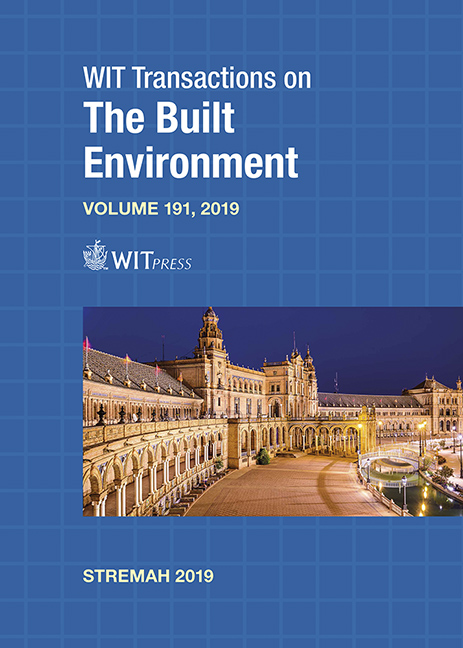VISUAL DOCUMENTATION OF THE STATE OF CONSERVATION BY MEANS OF UAV: THE CASE OF MARBLE CLADDING SYSTEM ON THE FAÇADES OF THE BRAZILIAN PALACE OF CONGRESS
Price
Free (open access)
Transaction
Volume
191
Pages
12
Page Range
139 - 150
Published
2019
Paper DOI
10.2495/STR190121
Copyright
WIT Press
Author(s)
BRUNA BARBOSA LIMA, VANDA ALICE GARCIA ZANONI
Abstract
The high-rise building appeared as a constructive tendency in the 20th century. It also stood out in this period the researches for new materials and traditional materials applied in innovative ways. The stone, for example, began to be adopted as slabs, as part of cladding systems in modern buildings façades. This shift has raised the question of how to conserve this material as part of façade systems, a subject underexplored in the Conservation Technology field. Moreover, there are difficulties imposed to the inspection and monitoring of high-rise buildings façades. In this context, it is proposed to investigate the conservation of stone cladding systems, its characteristics, behaviour and cause and effect relations that affect its ageing. For that, it is adopted as case study the Brazilian Palace of Congress, specifically its 28-story towers. Conceived in the 1960s to be the highest building in the capital, it presents the white marble as one of the elements that confer unity in the modern set of the Palaces of Brasilia. In order to characterize the object of study and its state of conservation, the damages were mapped according to the procedures: i) capture of images by means of a digital camera conducted by Unmanned Aerial Vehicle (UAV); ii) digital processing with generation of orthomosaics; and, iii) damage vectoring. Despite the obstacles during the capture of images, such as adverse climatic conditions and the inherent characteristics of marble slabs (white and highly reflective surface, natural pattern easily mistaken with pathological manifestations), the procedures were effective in meeting the proposed objectives. Finally, the information obtained will be used in the subsequent stages of analysis and intervention proposal, as intended to contribute to the conservation actions regarding the marble cladding system, and the safeguarding of this remarkable example of modern heritage.
Keywords
modern architecture, high-rise buildings, façade systems, marble cladding systems, estate of conservation, UAV, Brazilian Palace of Congress




